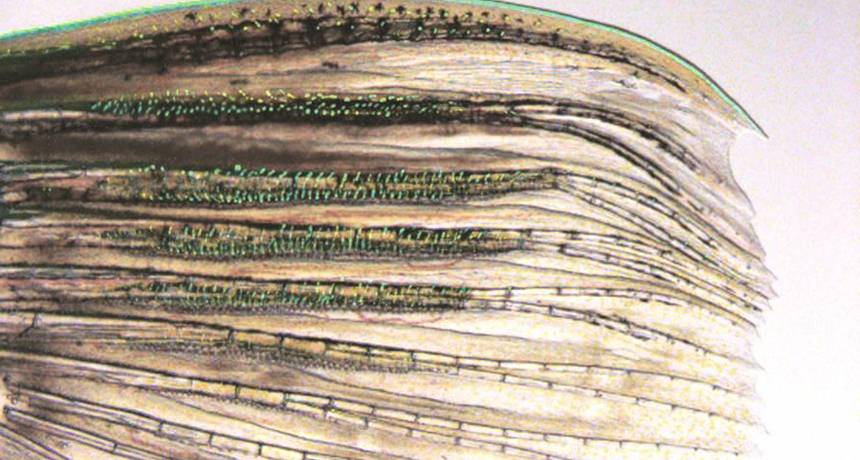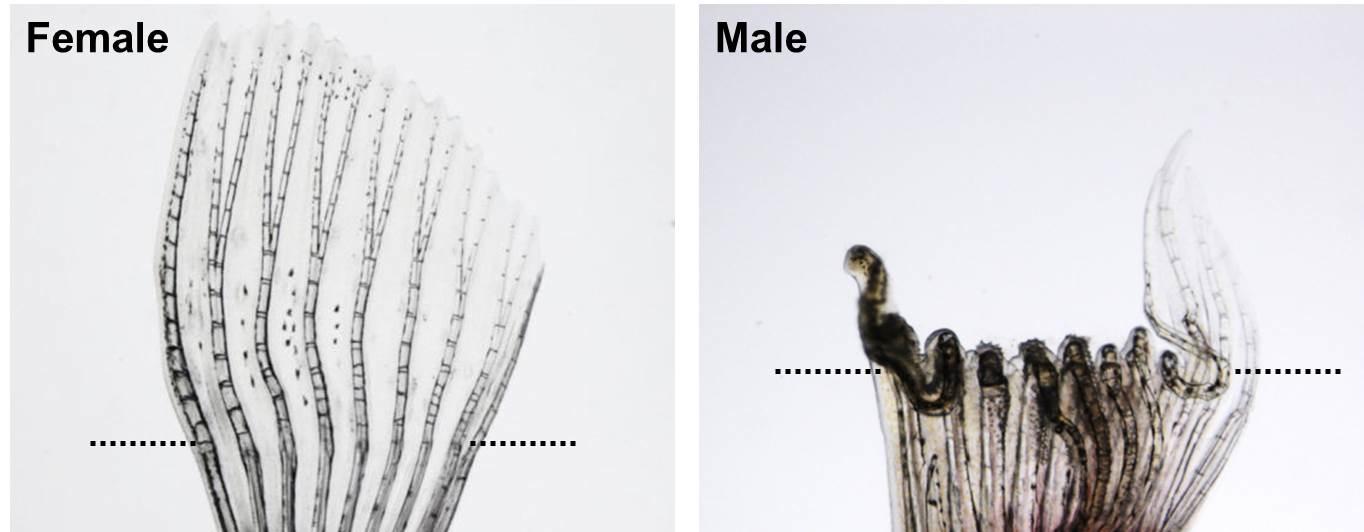Male zebrafish sex tool stops fin regeneration

SEX OVER SURVIVAL Male zebrafish have spiked structures on their pectoral fins (shown), which help them have sex, and also make a protein that blocks fin-tissue regeneration after injury or amputation.
Kang et al/Developmental Cell 2013







